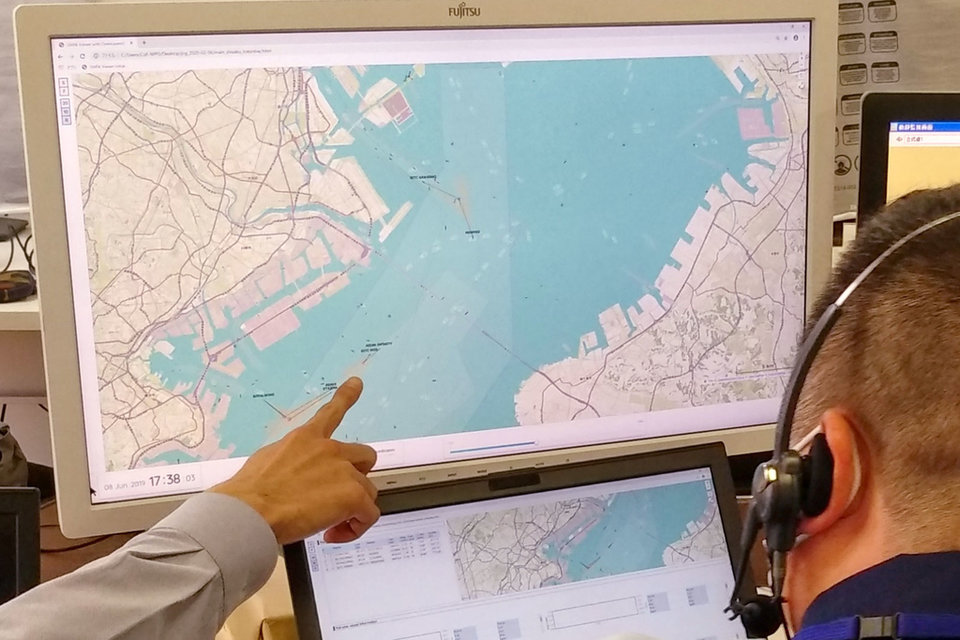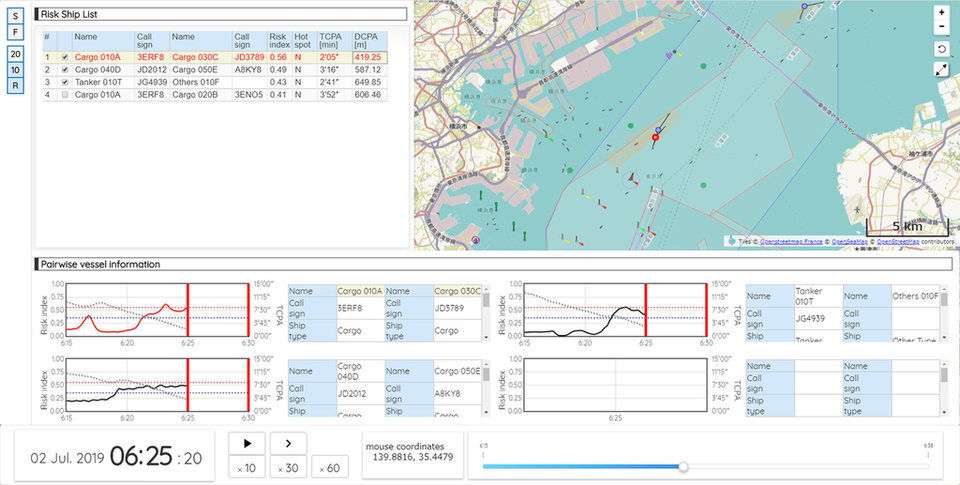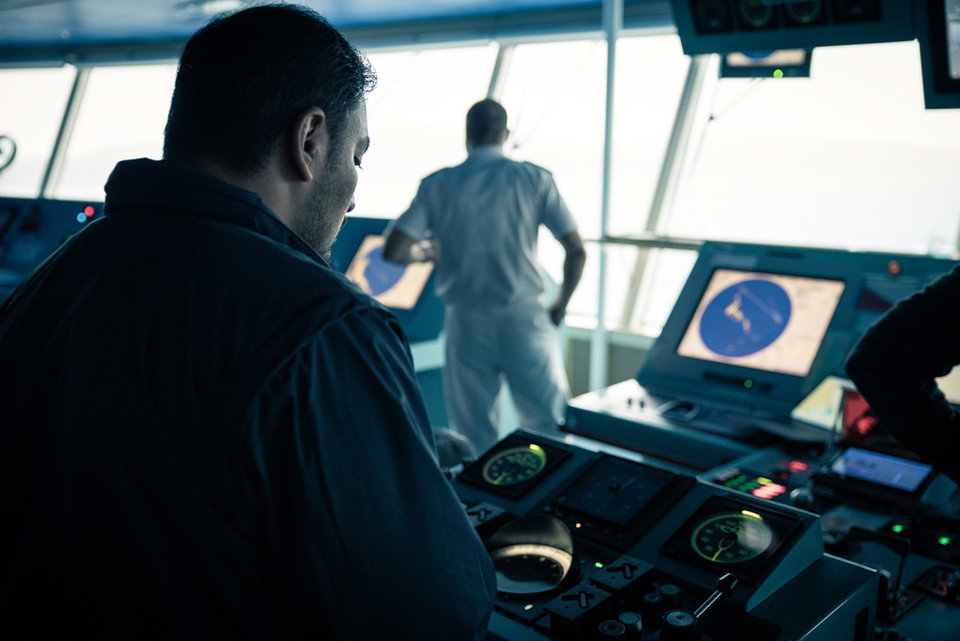Technology
Preventing ship collisions:
is technology the answer?
Despite the evolution of navigation equipment, ship collisions still occur and can be devastating for crew and cargo. Alex Love looks at how technology can help prevent collisions, and ask if existing regulations may need to change as shipping moves into a more digital era.
Image:
The seas are
becoming increasingly congested, with the IFT Transport Outlook 2019 predicting that demand for maritime trade could triple within the next 30 years.
Yet despite the rise in traffic, the number of serious collisions has fallen within the past decade. Figures from Allianz revealed a 65% drop in global vessel losses, with 132 lost in 2009, compared with 46 in 2019.
Nevertheless, even a minor collision can be enough to disrupt operations, posing risks to crew and the marine environment, not to mention a company’s bottom line. And with seas becoming more crowded, it is vital that operators follow the necessary safety regulations.
The main cause of ship collisions
It has been estimated that human error is responsible for anywhere between 75% and 96% of all marine accidents.
Some collisions are reportedly caused by crew members becoming too consumed with onboard instruments, meaning that they fail to look at what is happening on the seas outside. Others have apportioned some of the blame on the reduced crew numbers since the 2008 global financial crisis forced companies to operate in tighter margins, requiring crew members to do more work than they would have previously done.
This can lead to fatigue and stress for crewmembers, reducing performance. Distraction from smartphones has been another given reason, as well as a lack of training and experience on some vessels.
[Radar] systems have been known to function less effectively in more congested areas
At present, a ship’s radar is one method used to detect other ships and avoid collisions. However, radar is not infallible. Systems have been known to function less effectively in more congested areas, and are susceptible to severe weather.
Once a hazard has been identified, avoidance measures are sometimes taken too late - by which time a collision cannot be avoided. And the larger the ship, the longer it takes to reduce the vessel’s speed and take avoidance action, increasing the likelihood of a collision.

Evaluation by operation controller at the Tokyo Wan Vessel Traffic Service Center. Image: Fujitsu
Image:
How AI can help ships avoid collisions
AI and machine learning technology have the potential to dramatically transform shipping operations. Although the technology has made significant strides in a relatively short space of time, it is still being tested and is not currently at the stage where it could conceivably be used to run a large proportion of commercial shipping operations without any human involvement.
AI data can be analysed in real-time. The more operations data gathered, the simpler it becomes to identify trends. Preventing collisions is just one of numerous areas that AI can aid the shipping industry.
Japan has an average of 286 ship collisions a year, varying in severity. Recently, Fujitsu has been testing AI technology in collaboration with the Japanese Coast Guard to calculate the risk of collisions and near-misses from traffic control rooms. According to the company, less experienced operators can quickly use the technology as effectively as their more seasoned peers.
Using risk values calculated by Fujitsu's technologies, operators can proactively detect vessels at risk and prioritise them
“AI and big data technologies developed by Fujitsu Laboratories Ltd are used in the vessel collision risk calculation model. Using risk values calculated by Fujitsu's technologies, operators can proactively detect vessels at risk and prioritise them. This will help in preventive planning while offering accurate information to vessels,” says Hiraku Fujimoto, manager of systems division IV, social systems unit at Fujitsu Limited.
“The challenge is to further enhance technologies such as the real-time processing of a collision risk calculation model based on automatic identification system (AIS) data. If we can do so, we can study the feasibility of combining the vessel traffic service (VTS) system with our technology and strengthen the collaboration.”
Researchers found that it was possible to increase the speed control room operators can send alerts of risks to ships by as much as two minutes. The recent tests with the AI technology follow on from another set of trials by Fujitsu two years ago.
“Fujitsu was able to learn about the difference in traffic conditions between Tokyo Bay and the Strait of Singapore, where we conducted a field trial in 2018,” adds Hiraku Fujimoto. “We also learned the necessity and method of tuning the collision risk calculation model suitable for each sea area.”

Screen image of vessel collision prediction technology. Credit: Fujitsu
COLREGS: is the IMO convention still fit for purpose?
The IMO Convention on the International Regulations for Preventing Collisions at Sea (COLREGS) was adopted in 1972 and came into force in 1977, replacing the 1960 Collision Regulations. But there have been laws governing the seas for hundreds of years.
COLREGS are in place to ensure that all those operating vessels adhere to a necessary safety framework, covering aspects such as the best way to pass oncoming vessels, safe speeds in certain locations, the safest way to overtake, as well as required equipment that includes tracking devices. Regulations apply to all vessels operating on the seas, with special rules for different sizes and classes of ships, from small sailing vessels and fishing boats to large-scale oil tankers.
The collision regulations permit states to impose their own regulations in particular areas
“Legally, the international convention requires states to impose or accept a particular contact as the appropriate contact of vessels at sea,” explains professor Michael Tsimplis from City University of Hong Kong, who is also a former director of the Institute of Maritime Law.
“The collision regulations permit states to impose their own regulations in particular areas. And perhaps most importantly of all, they actually say that the primary duty is one of the good seamanship,” he adds. “If there is a conflict between following the regulations and avoiding an accident, the primary purpose of the regulations is to avoid the accident.”

Image: Michele Rinaldi / Shutterstock.com
Adjusting regulations
Currently, the shipping industry finds itself stuck between the traditional method of operations and the newer processes that involve the greater use of technology. In the future, it is much more likely that existing regulations will be adjusted in line with the latest technological capabilities, rather than drawing up a completely new set.
“It is really how you're going to build in any new technological developments rather than scrapping them and doing something completely different,” professor Tsimplis adds. “The basic objective is always to avoid a collision taking place.
“When you have people making the decision on board ships, it has to be done in a way that the collision regulations are operating. If you want to think in a futuristic world: if you have two vessels that are both navigated by computers and they can find a safe way of getting across each other without colliding, I don't see any problem of doing things safely without following the collision regulations.
“The problem with humans is that sometimes we misunderstand each other or the language is different, or we infer things that have not been said. Although masters do communicate, they make mistakes on the basis of this communication and then collisions arise.
Although masters do communicate, they make mistakes on the basis of this communication and then collisions arise
“And the courts have taken a very grave view on what happens when masters agree to act against the collision regulations - they actually consider that as negligence.
“So it's fine to communicate with the other vessel, provided that you agree some manoeuvres within the collision regulation framework, not against it.”
With more vessels expected on seas in the future, AI will be one way to help avoid collisions. However, technology is unlikely to ever fully replace human involvement in control rooms any time soon. AI is more likely to enhance operations, instead of replacing workers.
“The risk of marine collision is expected to rise in the future, as the volume of marine transportation increases and vessels become larger. Accordingly, we expect that maritime traffic control operations to ensure maritime traffic safety, such as the expansion of control monitoring areas, will be more difficult,” adds Hiraku Fujimoto.
“That said, Fujitsu will aim to commercialise and offer services using its AI technology in supporting operators facing more complicated tasks - instead of being in an environment where there won't be any control room operators.”